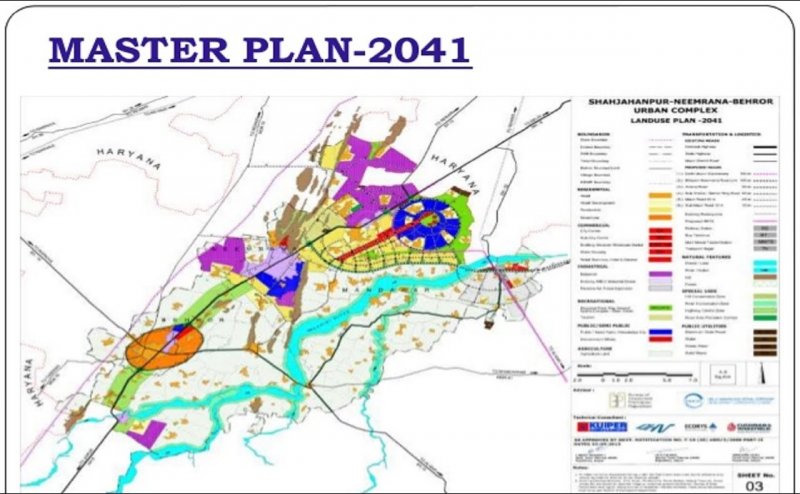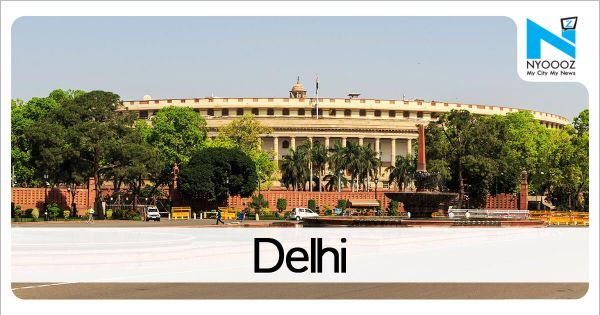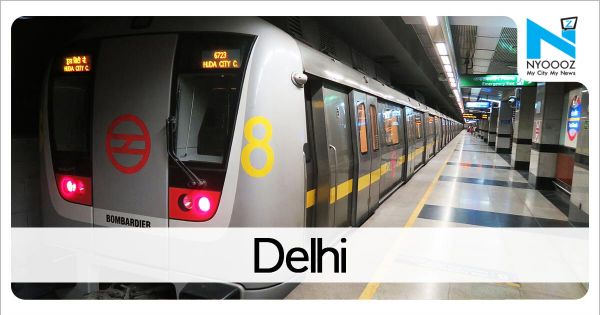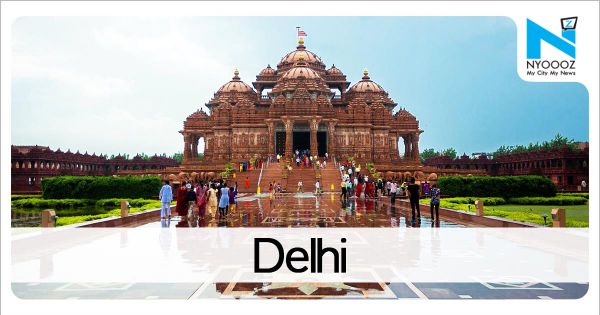
The draft Master Plan of Delhi 2041, which will serve as the blueprint for the development of the Capital for the next two decades, is now open to public scrutiny for the next 45 days. The document focuses on the environment and on tackling pollution. It seeks to make the city liveable and safe, provide better economic opportunities, offer housing for all with emphasis on affordable and rental accommodation and land pooling, and redevelopment of old areas of the city. For the first time, private developers will be allowed to offer housing in land-pooling schemes.
the Master plan of Delhi 2041 is what the city aims to be for the next 20 years. It holds everything regarding the plan to develop the city.
The draft Master Plan of Delhi 2041, which will serve as the blueprint for the development of the Capital for the next two decades, is now open to public scrutiny for the next 45 days.
The document focuses on the environment and on tackling pollution. It seeks to make the city liveable and safe, provide better economic opportunities, offer housing for all with emphasis on affordable and rental accommodation and land pooling, and redevelopment of old areas of the city. For the first time, private developers will be allowed to offer housing in land-pooling schemes.
Addressing the challenges faced during pandemics, earthquakes, and floods, the draft MPD 2041 suggests periodic safety audits for structural safety and the formation of a Delhi Disaster Response Force. It also says steps should be taken to build resilience for natural disasters such as earthquakes and floods.
It proposes a regeneration scheme for high-risk zones.
To reduce vulnerability to diseases such as airborne epidemics, it proposes promoting decentralized workspaces, mandatory creation of open areas, public spaces, and plazas in new developments, and better habitat design and green-rated developments to reduce dependence on mechanical ventilation systems.
“Decentralised workspaces shall be promoted in the form of co-working spaces, shared workspaces within slum rehabilitation projects, support for home-based work, etc. Additionally, common community spaces shall be promoted to be utilized for providing refuge spots, common kitchens, quarantine spaces, etc., at the time of emergency,” the document said.
Preparation of the draft MPD 2041 started in 2017 and continued through the lockdowns and other restrictions imposed on account of COVID-19. MPD 2041 will be GIS-based, which means that zonal plans have been prepared after digitally mapping every service, land use and infrastructure.
The master plan is one of the key instruments that facilitate Delhi’s development. It is a ‘strategic’ and ‘enabling’ framework to guide the growth of the city and it builds upon lessons learned from the implementation of the previous plans of 1962, 2001, and 2021. The Delhi Development Authority is the anchor agency for the master plan.
The draft MPD 2041 is in two volumes and comprises sector-wise policies in the key areas of environment, economy, public spaces, heritage, shelter, mobility, and social and physical infrastructure. It includes spatial development strategies to guide the intensity and type of development in various parts of Delhi (land pooling area, green development area, regeneration of planned and unplanned areas, transit-oriented development, strategic regeneration).
The first master plan for Delhi was promulgated in 1962 under the Delhi Development Act of 1957, followed by the master plans of 2001 and 2021, each of which extensively modified the previous plan document.
“These plans were prepared for 20-year prospective periods and provided a holistic framework for planned development of Delhi. The MPD 2041 is a ‘strategic’ and ‘enabling’ framework to guide future growth of the city, built upon the lessons learned from the implementation of the previous plans,” the draft says.
The release of MPD 2041 in 2021 coincides with the start of the 75th year of India’s Independence. The country is set to become the third-largest economy in the world by 2050 and its growth trajectory is increasingly being defined by cities that contribute 60 percent of GDP.
The National Capital Territory of Delhi is the largest city in the country by area, spread across about 1,486.5 sq. km. It comprises 367 villages, most of which are declared urban. There are 11 districts, 33 tehsils/sub-divisions, 272 wards and five local bodies handling civic administration – North DMC, South DMC, East DMC, New Delhi Municipal Council and the Cantonment Board. Delhi is divided into 18 planning zones for ease of planning and management.
Environment: The city is quite green, although such spaces are inequitably distributed and their quality needs to be improved at many places. Moreover, Delhi suffers from consistently high levels of air, water, and noise pollution.
The River Yamuna is severely polluted, threatening not only environmental assets and the local biodiversity but also the health of citizens. The document proposes to improve the environment, with emphasis on preservation and enhancement of ecological heritage (Yamuna riverfront development, biodiversity parks).
The draft MPD 2041 stresses the need to augment the city’s preparedness to deal with pollution, for which it proposes a blue-green policy that integrates drains (blues) with the green areas around it. There is provision to adopt strict norms to tackle air, water and noise pollution and Special Green Economic Uses that will have low floor-area ratio and large green areas
Water: Delhi is a water-scarce city and yet the resource is wasted due to systemic losses and the lack of a conservation and reuse strategy. This has serious implications on the city’s growth prospects and the basic need of water for day-to-day activities.
Critical resources: Delhi’s consumption of power and generation of waste are among the highest in the country and need to be reduced. Existing efforts towards recycling waste and a shift to renewable energy must be mainstreamed.
Mobility: There is the availability of good quality public transport but the city has a large number of private vehicles, leading to problems such as congestion, unorganized parking and air pollution. Last-mile connectivity and paths for walking and cycling need to be provided to improve the mobility of citizens, especially people with disabilities, the elderly, and children.
Housing: High land prices have resulted in a mismatch between housing needs and supply. A large part of Delhi is unplanned, with unauthorized colonies that fulfill the need for housing by providing less expensive options of owned and rental accommodation.
Due to the poor quality of construction and high densities of built-up areas, these developments are unsafe. There is a need for different typologies and tenures of housing. The draft focuses on rental and small-format housing (especially close to mass transit) and incentivizes new formats like serviced apartments, condominiums, hostels, student housing and worker housing.
DDA could earmark some plots for this, which can be leased out to private developers.
The draft plan proposes a policy for redevelopment and re-densification of old areas, especially urbanised villages and unauthorised colonies and says social infrastructure must be provided in such existing residential areas.
There is a chapter on the Green Development Area Policy that provides an integrated framework for development of a Green Belt along the NCT of Delhi boundary. The aim is to create a regional environmental buffer, reduce the impact of air pollution and urban heating, improve the predictability of rainfall and combat the threat of desertification.
New farmhouses will be permitted in standalone plots or clusters. The maximum built-up area for a farmhouse plot – whether standalone or part of a cluster – will not exceed 3,000 square meters, irrespective of the plot size.
There is a prescription for built environment and public space. Facilities and open spaces in the city have become inadequate with the steady growth in population and in many areas, they have become old and dilapidated. Public spaces have to be made universally accessible and safer. There is a need for regeneration and strategic intervention to unlock the latent potential of certain areas in the city.
Heritage assets: Delhi is a cultural capital and has a large number of heritage assets. The preservation of assets and their adaptive reuse must be promoted to prevent degradation and loss.
Vulnerability: Delhi falls in seismic zone four and is at high risk of earthquakes, fire outbreaks, and flooding. High built densities, poor quality, and age of built stock further increase this vulnerability. The COVID-19 pandemic has brought into focus the need to create self-contained and mixed-use areas with decentralized infrastructure.
Economic potential: Delhi must fully realize its niche role and potential as an economic hub. Specialty health and higher education are focus areas. Cleaner production, startups, innovation, and cyber economies have to be promoted by providing a variety of flexible and shared spaces to entrepreneurs in addition to opportunities and good working conditions. Niche sectors such as specialty health, higher education, tourism and meetings, incentives, conferences and exhibitions (MICE), modern logistics, and specialized trade also need to be promoted.
Monitoring and evaluation: A common database needs to be established at the city level with multi-agency coordination and an integrated monitoring protocol needs to be set up. This will help oversee the progress of the city and various sectors.
The way ahead
Implementation of the master plan lasts over the horizon year. It showcases what one expects Delhi to look like in 2041, urban experts told.
They said this is the first time that the document has been placed for public consultation while it is being prepared. They said the COVID-19 pandemic has left a lasting impact on how we envision the working of our cities and businesses, in terms of both economic resilience and how planning can foster new methods of working or doing business.
“MPD 2041 would do well to account for these and start looking at these models as a new normal – something that was simply not anticipated in the last plan,” they said.
The entire process requires cross-organizational coordination, notably with the National Capital Region Planning Board, Indian Railways, Delhi Urban Shelter Improvement Board, Delhi Jal Board, Delhi Electricity Regulatory Commission, Delhi TransCo, and the power utilities, they said.
Will the draft master plan help make housing affordable in Delhi?
Urban experts say MPD 2041 has a chapter devoted to the land pooling policy that covers urban extensions in 95 villages and greenfield areas in five zones, including J, K-1, L, N, and P-II, which come under the Master Plan of Delhi 2021. As part of the land pooling policy, DDA will act as a facilitator and planner while the process of pooling and development will be undertaken by developer entities or a consortium.
A lot will depend on how much organized private sector delivery in housing takes place. DDA has all along been the chief developer in Delhi.
For the first time, the private sector will offer housing in direct competition with DDA within the land pooling schemes. DDA has traditionally kept its housing prices low. The question is whether private developers will retain this trend.
“Their pricing could be more dependent on what is happening in the rest of the National Capital Region. For one, this stock will be targeted towards users and less towards speculators. The other factor will be how much of commercial occupancy is being sought by these developer entities,” the urban experts added.

If You Like This Story, Support NYOOOZ
Your support to NYOOOZ will help us to continue create and publish news for and from smaller cities, which also need equal voice as much as citizens living in bigger cities have through mainstream media organizations.
Stay updated with all the Delhi Latest News headlines here. For more exclusive & live news updates from all around India, stay connected with NYOOOZ.










